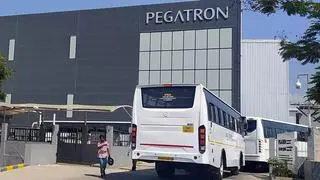Users of mobile data are always in a dilemma; what to choose — a WiFi or cellular network — for better data connectivity? Such questions may soon be a thing of the past if a team of researchers at the Indian Institute of Technology Bombay (IIT-B) has its way.
The scientists at IIT-B’s Electrical Engineering Department have come out with a set of algorithms for network service providers to efficiently manage the choice of network for mobile devices.
Today, WiFi is available in most public places, thanks to hotspots. Although generally WiFi provides higher data speed compared with cellular network and is cost-effective, data rate starts to drop as more people connect to a single hotspot. On the other hand, if the number of data connections increase in a cellular network, it may lead to voice call blocking. The next generation 5G communications technology tries to address these limitations of mobile telephony, said the IIT-B scientists in a statement.
“But at present, these limitations are for real. Currently, there is no coordination between a WiFi network and 4G network. The decision to choose between either of the two networks is taken by the user. Our algorithms make it possible for the operator to take over this job,” said Arghyadip Roy, a doctoral student with Abhay Karandikar, Professor, IIT-Bombay who recently took over as the director of IIT-Kanpur.
“The system that we have proposed on the other hand can give the network operator a chance to judiciously allocate better data transfer rates and quality of voice calls to the consumers,” Roy told BusinessLine. It provides a central controller that can be used by the operator to monitor the connections at each cell tower or WiFi access points and decide if a data or voice call should be served using mobile network or WiFi.
“Controlling the access networks through a central, cloud-based controller is the future of mobile networks. People want to have the entire picture of the network and make decisions based on that,” said IIT-B professor Prasanna Chaporkar, who along with Karandikar and Roy authored the paper which appeared in the IEEE journal Transactions on Vehicular Technology recently, in a statement.
The scientists said their idea was to find a way to make maximum utilisation of the system. That way, each user can get the best data rate possible while ensuring that the fraction of voice calls blocked stay within specified limits.






